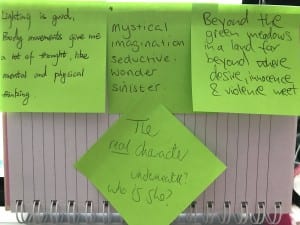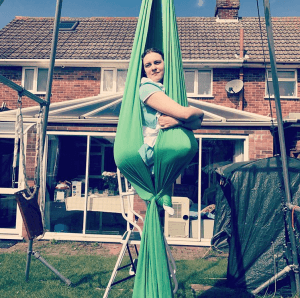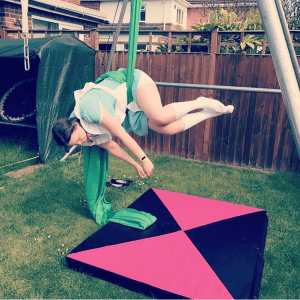Bibliography
Abramovic, M. (2010) Seven Easy Pieces by Marina Abramovic [DVD]. Microcinema International
Adamson, K. (2015) “Somewhere Over the Rainbow”: The gay anthem of the century. Queer Culture Collection, English and Women’s Studies 245: Introduction to Lesbian and Gay Studies
Burton, T. (dir.) (2010) Alice in Wonderland [DVD]. Walt Disney Studios Motion Pictures
Durning, J and Waterhouse, E. (2013) 77 Choreographic Proposals: Documentation of the evolving mobilization of the term choreography. International Journal of Performance Arts & Digital Media 9(1) 44-51
Fleming, V. (dir.) (1939) The Wizard of Oz. [DVD]. Loew’s Inc.
Lea, R (2017) Fictional characters make ‘experiential crossings’ into real life, study finds. The Guardian, 14 February. Available from: https://www.theguardian.com/books/2017/feb/14/fictional-characters-make-existential-crossings-into-real-life-study-finds [Accessed on 28/3/2017]
Lepecki, A. (2010) The Body as Archive: Will to Re-Enact and the Afterlives of Dances, Dance Research Journal, 42(2) 28-48
Maloney, A. (2015) Marina Abramovic and the art of female sacrifice. New York Times, 17 November. Available from: http://nytlive.nytimes.com/womenintheworld/2015/11/17/marina-abramovic-and-the-art-of-female-sacrifice/ [Accessed on 1/5/2017]
Phelan, P. (1993). Unmarked: the politics of performance. London: Routledge, Chapter 7
Pitches, J. and Popat, S. (2011) Performance Perspectives: A Critical Introduction. UK: Palgrave Macmillan.
Pollard, W. (2005) Marina Abramovic, Seven Easy Pieces. Circa Art Magazine
Powell, B. (2010) Seven Easy Pieces and Performance Document(ation)s. Theatre Annual 63
Princenthal, N. (2006) Back for One Night Only. Art in America 94:2 pp. 90-94
Queerty Staff (2009) Johnny Depp Stars in Alice in Wonderland, the Gayest Film of the Next Decade. Queerty, 16 December. Available from: https://www.queerty.com/johnny-depp-stars-in-alice-in-wonderland-the-gayest-film-of-the-next-decade-20091216 [Accessed on 28/3/2017]
Shalson, L. (2013) Enduring Documents: Re-Documentation in Marina Abramovic’s Seven Easy Pieces. Contemporary Theatre Review, 23(3) 432-441
Schopp, A. (2016) The Gay Great Gatsby: Andrew Holleran’s Dancer from the Dance and the Dismantling of Normative Cultural Frames. Lit: Literature Interpretation Theory, 27(2), 153-171
Semple, R. (2015) Camp Sites: The Wizard of Oz. Gaytimes. 26 September. Available from: http://www.gaytimes.co.uk/culture/8905/camp-sites-wizard-oz/ [Accessed on 28/3/2017]
Thomas, H. (2003) Reconstructing the Dance: In Search of Authenticity. The Body, Dance and Cultural Theory. New York: Palgrave Macmillan 121-145
Vaclavik, K. (2015) Alice in Wonderland: The making of a style icon. The Independent, 23 March. Available from:http://www.independent.co.uk/arts-entertainment/books/features/alice-in-wonderland-the-making-of-a-style-icon-10128741.html [Accessed on 28/3/2017]





Recent Comments